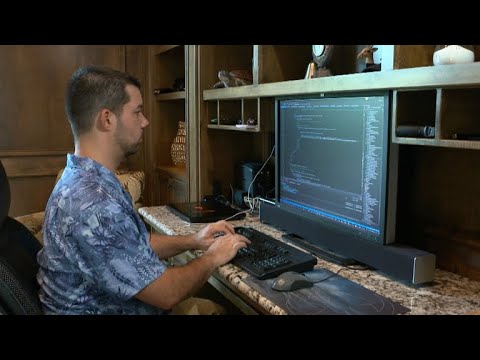II
Size: a a a
2019 May 22
Ща эксперта спрошу
Суннит. Потому что он никак не проявляет себя как шиит. А по дефолту все сунниты.
AV
Парни, привет
не могу найти инфу где и в каком виде в МЕТАМАСКЕ хранится мнемоник (сиид фраза)
кинь линк лиз
не могу найти инфу где и в каком виде в МЕТАМАСКЕ хранится мнемоник (сиид фраза)
кинь линк лиз
ET
Парни, привет
не могу найти инфу где и в каком виде в МЕТАМАСКЕ хранится мнемоник (сиид фраза)
кинь линк лиз
не могу найти инфу где и в каком виде в МЕТАМАСКЕ хранится мнемоник (сиид фраза)
кинь линк лиз
Настройки - Безопасность и Приватность - Показать ключевую фразу
AV
Настройки - Безопасность и Приватность - Показать ключевую фразу
Спасибо за ответ , но я про само хранение мнемоника, ибо после импорта и перезагрузки ноутбука только паролем открываешь
B
Парни, привет
не могу найти инфу где и в каком виде в МЕТАМАСКЕ хранится мнемоник (сиид фраза)
кинь линк лиз
не могу найти инфу где и в каком виде в МЕТАМАСКЕ хранится мнемоник (сиид фраза)
кинь линк лиз
ST
Кстати, поздравляю всех с Bitcoin pizza day! 9 лет прошло...
https://www.youtube.com/watch?v=LjNMgeqUgks
https://www.youtube.com/watch?v=LjNMgeqUgks
AM
Продукты питания все дешевеют
.
.
AM
Настолько не интересно обсуждать очевидные вещи, типа того что не существует такого субъекта как общество, что лучше обсудить религию диснеевского Аладина. Как вы думаете он был шиитом или сунитом?
Права собственности неотделимы от социума.
Мы же говорим про часть публичного имущества приписываемая обществом данному субьекту
Мы же говорим про часть публичного имущества приписываемая обществом данному субьекту
λƒ
Всем привет. В одном из выпусков подкаста описывался способ получения честного рандома основанный на том, что есть какой-то нераспараллеливаемый вычислительный процесс, который гарантированно будет выполняться в течении какого-то времени. Гарантии берутся из теоретических пределов современной электроники. При этом результат вычисления легко проверить. До тех пор пока этот процесс не будет завершен (и результат не будет вскрыт) все заявлют о совершении каких-то действий. По завершении гарантированного времени все ждут результата процесса. Этот результат используется для получаения случайного числа и заявленные действия выполняются. Как это называется и где про это можно почитать?
AS
Verifiable Delay Function?
DK
Verifiable Delay Functions
Boneh et al. have recently introduced this concept https://eprint.iacr.org/2018/601.pdf . Shortly, these are functions that guaranteely require certain amount of time to be computed even if parallelism is available, and the output can be easily verified for correctness. For example, a Bitcoin proof of work is not a VDF because it can be (and is) computed quickly by a number of parallel processors. This concept has many practical applications for decentralized protocols such as randomness beacon: participants bring their seeds within time T then apply VDF G to the collection. The result can not be manipulated by any party if G can not be computed faster than T.
Interestingly, one can not obtain such functions if parallelism is unlimited: if both input and output are short, the solution search is an NP problem and we do not know any computation that requires exponential (of input) time, even if we drop the fast verification requirement. Also the solution can be brute forced by an exponential number of processors.
The authors suggest several VDF candidates for bounded parallelism. First, one can obtain a VDF by applying a ZKSNARK proof generation algorithm to a sequence of hash function calls. In the straightforward setting the function is too slow, but it can be sped up using incremental proofs of computation. Secondly, a polynomial GCD of degree t is a candidate if less than t^2 processors are available. There are also some other underexplored candidates, but no definitively good one.
One may wonder if some memory-hard functions such as our Equihash or MTP are good VDF. Unfortunately, the MTP computation is inherently parallel even though we tried to make it as memory-hard as possible by using a large instance of Argon2, thus making it difficult for ASIC implementation. Equihash is more promising as long as the parallelism is bounded: the bottleneck of Equihash is sorting, and there are well known logarithmic parallel sorting algorithms, though they are all very difficult for practical implementation on any architecture. When a more practical mesh architecture is considered, we are aware of a parallel algorithm that sorts N inputs in sqrt(N) time with N^2 processors. The delay is present but it is sublinear. It remains to see if other candidates appear.
Boneh et al. have recently introduced this concept https://eprint.iacr.org/2018/601.pdf . Shortly, these are functions that guaranteely require certain amount of time to be computed even if parallelism is available, and the output can be easily verified for correctness. For example, a Bitcoin proof of work is not a VDF because it can be (and is) computed quickly by a number of parallel processors. This concept has many practical applications for decentralized protocols such as randomness beacon: participants bring their seeds within time T then apply VDF G to the collection. The result can not be manipulated by any party if G can not be computed faster than T.
Interestingly, one can not obtain such functions if parallelism is unlimited: if both input and output are short, the solution search is an NP problem and we do not know any computation that requires exponential (of input) time, even if we drop the fast verification requirement. Also the solution can be brute forced by an exponential number of processors.
The authors suggest several VDF candidates for bounded parallelism. First, one can obtain a VDF by applying a ZKSNARK proof generation algorithm to a sequence of hash function calls. In the straightforward setting the function is too slow, but it can be sped up using incremental proofs of computation. Secondly, a polynomial GCD of degree t is a candidate if less than t^2 processors are available. There are also some other underexplored candidates, but no definitively good one.
One may wonder if some memory-hard functions such as our Equihash or MTP are good VDF. Unfortunately, the MTP computation is inherently parallel even though we tried to make it as memory-hard as possible by using a large instance of Argon2, thus making it difficult for ASIC implementation. Equihash is more promising as long as the parallelism is bounded: the bottleneck of Equihash is sorting, and there are well known logarithmic parallel sorting algorithms, though they are all very difficult for practical implementation on any architecture. When a more practical mesh architecture is considered, we are aware of a parallel algorithm that sorts N inputs in sqrt(N) time with N^2 processors. The delay is present but it is sublinear. It remains to see if other candidates appear.
λƒ
Verifiable Delay Function?
Спасибо!
AS
Очень интересно, пока ничего непонятно. А какие использования у этого могут быть?
Насколько я помню, впервые я про них услышал на девконе на докладе про Casper
λƒ
Очень интересно, пока ничего непонятно. А какие использования у этого могут быть?
На пример выборы валидаторов в BFT-блокчейны. После каждого n-ого блока в течении какого-то времени принимаем заявки на участие в валидации. Через сутки значение раскрывается и среди заявившихся выбираются новые валидаторы. Никакого стейка, честная лотерея, все счастливы.
ST
На пример выборы валидаторов в BFT-блокчейны. После каждого n-ого блока в течении какого-то времени принимаем заявки на участие в валидации. Через сутки значение раскрывается и среди заявившихся выбираются новые валидаторы. Никакого стейка, честная лотерея, все счастливы.
но ключевой вопрос - что мешает последнему участнику просчитать результат и не раскрывать своё значение, если результат ему не нравится
λƒ
но ключевой вопрос - что мешает последнему участнику просчитать результат и не раскрывать своё значение, если результат ему не нравится
в смысле "последнему"? не важно ведь кто раскрывает. заявки принимются до истечения гарантийного срока. а дальше кто-угдно раскрывает и запускает процесс выборов.
λƒ
но я еще статью не почитал 🙂
λƒ
в смысле "последнему"? не важно ведь кто раскрывает. заявки принимются до истечения гарантийного срока. а дальше кто-угдно раскрывает и запускает процесс выборов.
то есть, как я понял, до истечения гарантийного срока вычисление физически невозможно. именно по этому "последнего" нет.
DK
но ключевой вопрос - что мешает последнему участнику просчитать результат и не раскрывать своё значение, если результат ему не нравится
Значения открыты с самого начала





